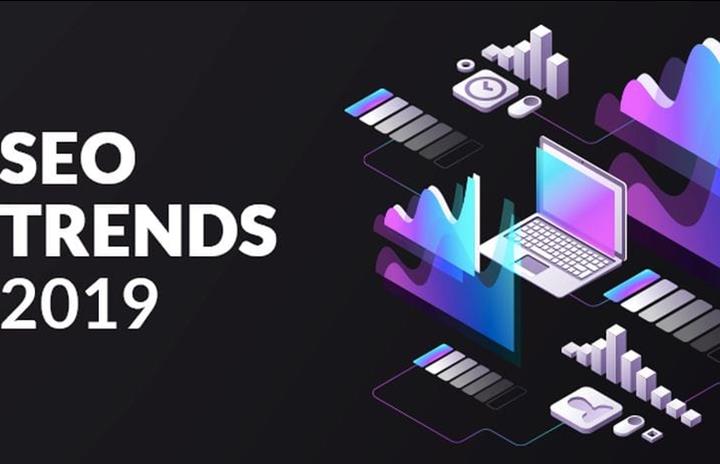Google’s always striving to get the best for their users, so naturally, they only make changes to their algorithm in favour of web users. See the new SEO trends for 2019 that will try to adapt to Google’s constant algorithm changes.
In order to keep up with Google’s constant changes, all SEO specialists should prepare their strategy in advance. This includes staying on top of news and updates to know all about upcoming trends and have time to create an action plan for each one of them.
During 2018 Google continued shaking things with their enhanced aim towards prioritising mobile-friendliness and page speed, so it seems reasonable to assume that this is going to be the initial path they’ll be walking in 2019. This means that all SEO efforts should give this some serious consideration.
In addition, there are new non-google elements in the web search engine universe looking to influence the way in which SEO is usually conducted. Learn how to get the most of these new 2019 trends and how to implement them well.
Page Speed And Loading Times
One of Google’s biggest efforts is to enhance user experience (UX) as much as possible. For them, giving the best User Experience is top-priority and it must be delivered fast. For years Desktop Page Landing was one of the biggest ranking factors but for the last few years Mobile Page Speed has been slowly taking over desktop speed as the most important ranking factor.
These changes require a clear understanding of the metrics that become more relevant to Google when they evaluate page speed in order to rank websites. Back in the day, the site’s speed was evaluated merely on a technical parameter basis, but this has changed and now Optimisation and Speed have been added to the mix.
Now, the big change is related to the way in which that speed score is generated. The data is now being obtained from something called Chrome User Experience Report. Such report reflects the way in which your site loads for every web visitor. Evidently, this makes it impossible to get an approximation to that metric by running local tests.
As for the optimisation score goes, things are relatively easy, or at least they remain the same. You can definitely have control over this only by implementing all the usual actions to avoid slow loading times. It is very important to know which one of those “new” metrics have a stronger impact on rankings.
According to the information we’ve found online, there’s no apparent correlation between page speed and rankings, however, there’s a strong correlation between rankings and optimisation.
In Layman’s terms, Google can rate your website as slow but the rankings will stay the same. If the website is not optimised, then it will have a negative effect on rankings. As you know, these new metrics are still in a testing stage, so there’s no final word on correlations yet.
What can you do: Based on this, the Optimisation score is the one that matters the most in terms of getting higher rankings. You have the tools to make the best out of optimisation and use it in your website’s favour. You can check out this list of recommendations that Google has made available for all users.

Mobile-First Indexing
This means basically that Google will only consider the mobile version of your website for ranking and indexing. This process in which they’ll be migrating sites to the mobile-first index started last year and chances are that you, as a website owner, was already notified about this.
It’s very important to know that mobile-first doesn’t mean: mobile only. There’s only one index containing both desktop and mobile versions but Google will only use the mobile versions for ranking after migrating the site. If you are putting off turning your website into a mobile/friendly site, you better start doing something now because this is the primary factor for ranking and that matters a lot.
What can you do:
Search the web for mobile bots, they will help you better understand the way in which search engines work and see your website.
If you haven’t optimised your website into a mobile-friendly one, do it now. In addition to this, Google strongly recommends not to go m-dot and responsive to the same page, as this will confuse crawlers and it will have a negative impact on your website.
Try Google’s PageSpeed Insights to keep track of your website’s mobile loading speed.
Use SEO tools, like WebSite Auditor and keep a constant check on how your pages deliver outstanding User Experience (UX)
General Data Protection Regulation (GDPR)
Have you ever received one of those annoying emails about privacy policy and General Data Protection Regulation (GDPR)? Do you know what they’re about?
Well, this regulation was approved by the European Union and it addresses an important issue: who is the owner of the data that gets created by users online. In the past, such data was controlled by corporations, not the users, but all of that has changed and now the users are the ones who can collect it.
This means that users are allowed to request such data from any company that has them. In addition, users can request for that data to be corrected or exported. Failing to comply with these regulations can be costly for companies.
Now, of course, that this regulation affects EU companies and customers but international brands must also comply with the GDPR regulation. This has made Google implement some changes to its Analytics.
Right now, all of the personal user data gets expired after 26 months from the moment it was collected. It’s important to mention that this data includes affinity and demographic data but does not include sessions or goal completions. Moreover, website owners can adjust the data collection period and data can be deleted upon the individual user’s request.
What can you do If you have European customers or plan to have in the future?
Verify your cookie consent form: it should mention the reasons and type of data your site will be collecting, and of course, that the data is protected.
Follow the GDPR requirements and then update your privacy policy accordingly.
Review all the sources that may be collecting data on your website and be careful not to send private info over to Google Analytics by error.
Use IP anonymisation - if you happen to use Google Tag Manager - as a way to have a less precise idea of where your traffic is coming from.
What can you do If you don’t have European customers ?
You can try to switch off the option of “do not automatically expire” on Google Analytics. Now, this should be handled with care, because it means that all data protection responsibility will be on your shoulders now. Chances are that those data control measures will be implemented outside the European Union, so you can simply wait for it to happen.

Amazon As Search Engine
We all know that Amazon is not a web search engine even though it uses an algorithm that is similar to the one used by Google but every day more and more people use Amazon directly to do their shopping.
This means that a lot of web visitors skip the web search engine and just go to Amazon when they want to buy something. Amazon has turned into some sort of Google of merchants. Optimisation for Amazon should be a must if your business is about selling electronics or books etc.
Use Brand As Ranking Signal
Google uses online brand mentions in its search algorithm and websites can take advantage of this in two ways.
The first way to get this is through unlinked brand mentions. This causes the search engine to think of your website as an entity. After analysing all of this, Google’s search engine starts recognising your website as an authority in a particular area.
The second way to successfully accomplish Brand as a ranking signal is composed of all the other important aspects that make part of User Experience, like advertising, reputation, trustworthiness. For instance, Google acknowledges reputation as another ranking factor, this means that the impression that your brand leaves on online visitors or customers will affect the website’s rankings.
What can you do:
Track brand mentions online, there are many online tools that can make you find brand mentions all around the internet. Use these tools to engage with your visitors, clients and potential buyers, try to engage with both happy and unhappy so they know your website cares for them.
Look at the influencer’s market and find someone ready to promote your brand or maybe you can find someone who is already talking about your company.
Backlinks have always been a great ranking signal though it cannot be considered as a white-hat strategy. There are, however, some ways around this. You can, for instance, mention your brand online every single time you have the “natural” opportunity to do so.
Take a look at the competition. Check their sites, explore them in-depth, see how much of your own SEO tactics you see there. You can try to see how many Brand Mentions you can find and try to figure out their own strategies. Use them all in your favour.
There you have it, some of the most anticipated SEO trends for 2019, the most certain one is that everything is going mobile-friendly. Some other trends we will have to wait and see the possible consequences.

There you have it, some of the most anticipated SEO trends for 2019, the most certain one is that everything is going mobile-friendly. Some other trends we will have to wait and see the possible consequences.
For any doubts concerning your SEO efforts and strategies for 2019, make sure you click here to find the right guidance your website needs.